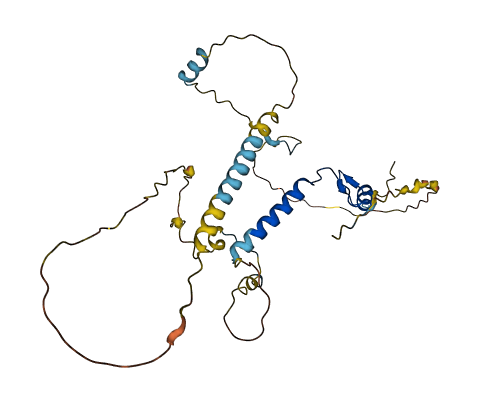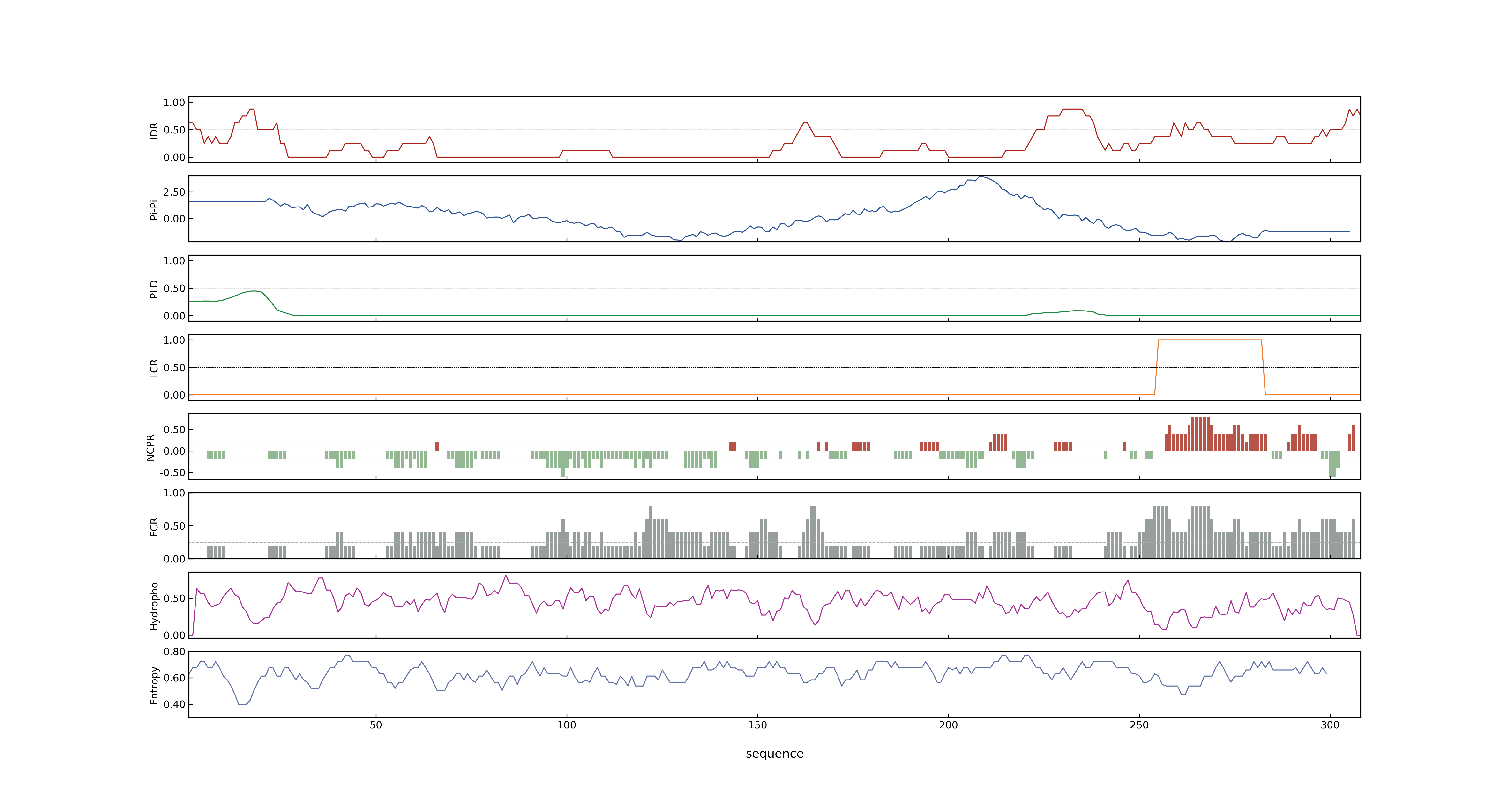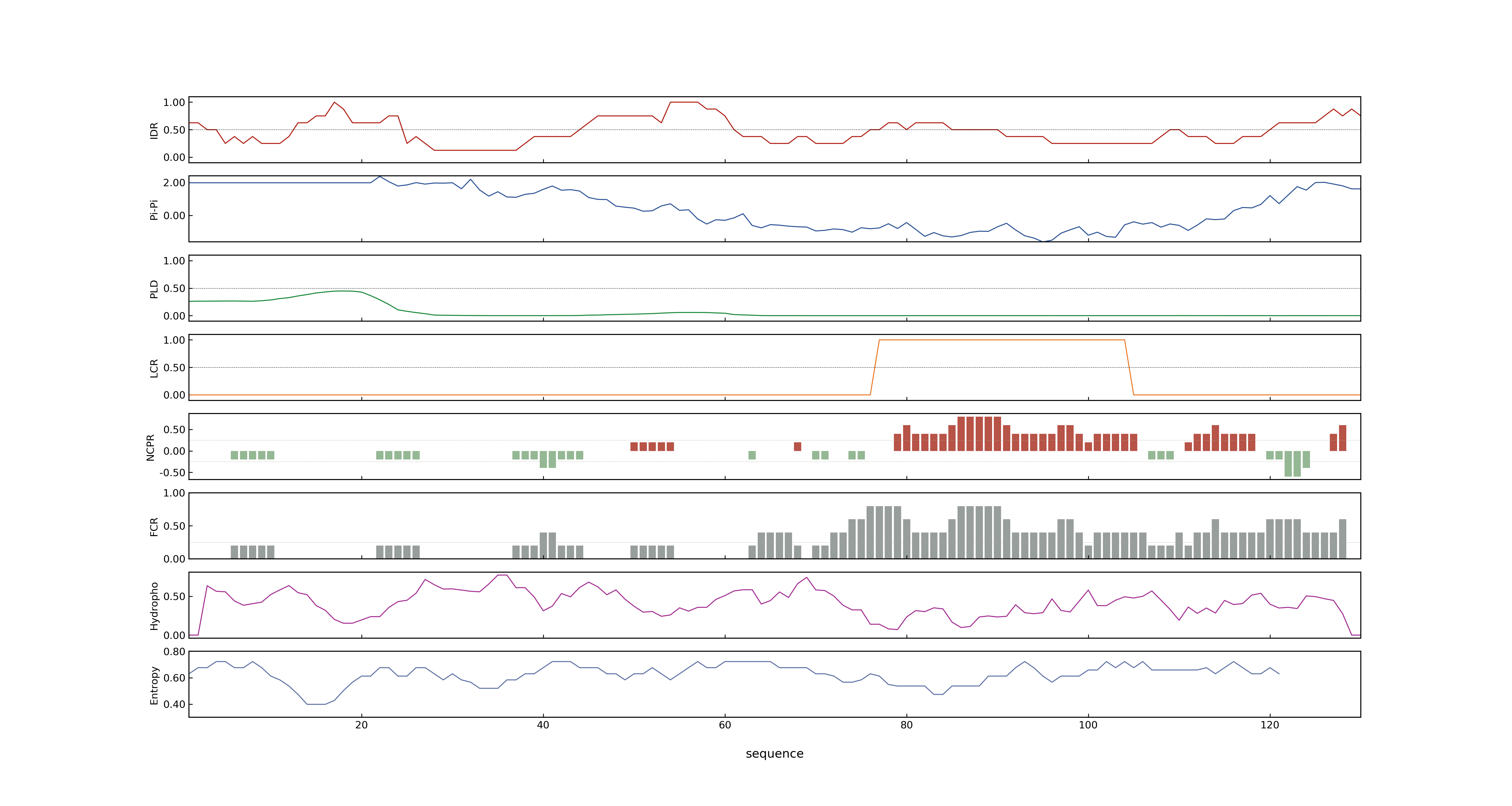- Information
- Symbol: NRR,CRCT
- MSU: LOC_Os05g51690
- RAPdb: Os05g0595300
- PSP score
- LOC_Os05g51690.1: 0.1192
- LOC_Os05g51690.2: 0.0452
- LOC_Os05g51690.3: 0.1315
- PLAAC score
- LOC_Os05g51690.1: 0
- LOC_Os05g51690.2: 0
- LOC_Os05g51690.3: 0
- pLDDT score
- 64.16
- Protein Structure from AlphaFold and UniProt
- MolPhase score
- LOC_Os05g51690.1: 0.98761099
- LOC_Os05g51690.2: 0.20802578
- LOC_Os05g51690.3: 0.98795610
- MolPhase Result
- Publication
- A novel rice gene, NRR responds to macronutrient deficiency and regulates root growth, 2012, Mol Plant.
- CO2 Responsive CCT protein, CRCT Is a Positive Regulator of Starch Synthesis in Vegetative Organs of Rice., 2015, Plant Physiol.
- Starch Content in Leaf Sheath Controlled by CO2 Responsive CCT Protein is a Potential Determinant of Photosynthetic Capacity in Rice., 2016, Plant Cell Physiol.
- Genbank accession number
- Key message
- We report here the expression and biological functions of a previously uncharacterized rice gene that we have named NRR (nutrition response and root growth)
- Expression of NRR in rice seedling roots was significantly influenced by deficiency of macronutrients
- Knock-down of expression of NRRa or NRRb by RNA interference resulted in enhanced rice root growth
- By contrast, overexpression of NRRa in rice exhibited significantly retarded root growth
- These results revealed that both NRRa and NRRb played negative regulatory roles in rice root growth
- Our findings suggest that NRRa and NRRb, acting as the key components, modulate the rice root architecture with the availability of macronutrients
- A novel rice gene, NRR responds to macronutrient deficiency and regulates root growth
- Promoter GUS analysis showed that CRCT was highly expressed in the phloem of various tissues such as leaf blade and leaf sheath
- Overexpression or RNAi knockdown of CRCT had no appreciable effect on plant growth and photosynthesis except that tiller angle was significantly increased by the overexpression
- CO2 Responsive CCT protein, CRCT Is a Positive Regulator of Starch Synthesis in Vegetative Organs of Rice.
- The expressions of several genes related to starch synthesis such as ADP-glucose pyrophospholylase and ÃÂÃÂÃÂÃÂÃÂÃÂÃÂÃÂÃÂÃÂÃÂÃÂÃÂÃÂÃÂñ-glucan phospholylase were significantly changed in transgenic lines and positively correlated with the expression levels of CRCT
- Given these observations, we suggest that CRCT is a positive regulator of starch accumulation in vegetative tissues, regulating coordinated expression of starch synthesis genes in response to the levels of photoassimilates
- The expression of CRCT showed diurnal oscillation peaked at the end of light period and was also increased by sugars such as glucose and sucrose
- In this study, we analyzed the effects of the starch level in the leaf sheath on the photosynthetic rate in leaf blade using CRCT overexpression and RNAi knockdown transgenic rice grown under ambient (38 Pa) or elevated (100 Pa) CO2 conditions
- In leaf sheath, the starch content was markedly changed in relation to CRCT expression levels under both CO2 conditions
- Connection
- NRR~CRCT, OsNPR1~NH1, A rice transient assay system identifies a novel domain in NRR required for interaction with NH1/OsNPR1 and inhibition of NH1-mediated transcriptional activation, NRR disrupts NH1 function, when over-expressed
- NRR~CRCT, OsNPR1~NH1, A rice transient assay system identifies a novel domain in NRR required for interaction with NH1/OsNPR1 and inhibition of NH1-mediated transcriptional activation, RESULTS: We have established a rice transient protoplast assay to demonstrate that NH1 is a transcriptional co-activator and that NRR represses NH1-mediated activation
- NRR~CRCT, OsNPR1~NH1, A rice transient assay system identifies a novel domain in NRR required for interaction with NH1/OsNPR1 and inhibition of NH1-mediated transcriptional activation, NRR, RH1, RH2, and RH3 share sequence similarity in a region beyond the previously identified NPR1-interacting domain
- NRR~CRCT, OsNPR1~NH1, A rice transient assay system identifies a novel domain in NRR required for interaction with NH1/OsNPR1 and inhibition of NH1-mediated transcriptional activation, Mutation W66A/F70A also greatly reduces the ability of NRR to repress NH1-mediated activation
- NRR~CRCT, OsNPR1~NH1, A rice transient assay system identifies a novel domain in NRR required for interaction with NH1/OsNPR1 and inhibition of NH1-mediated transcriptional activation, Our results demonstrate that the ability of NRR and its homologues to repress NH1-mediated transcriptional activation is tightly correlated with their ability to bind to NH1
- NRR~CRCT, OsNPR1~NH1, A rice transient assay system identifies a novel domain in NRR required for interaction with NH1/OsNPR1 and inhibition of NH1-mediated transcriptional activation, A rice transient assay system identifies a novel domain in NRR required for interaction with NH1/OsNPR1 and inhibition of NH1-mediated transcriptional activation
- NRR~CRCT, RH3, A rice transient assay system identifies a novel domain in NRR required for interaction with NH1/OsNPR1 and inhibition of NH1-mediated transcriptional activation, We identified three NRR homologues (RH1, RH2, and RH3)
- NRR~CRCT, RH3, A rice transient assay system identifies a novel domain in NRR required for interaction with NH1/OsNPR1 and inhibition of NH1-mediated transcriptional activation, NRR, RH1, RH2, and RH3 share sequence similarity in a region beyond the previously identified NPR1-interacting domain
- NRR~CRCT, RH3, A rice transient assay system identifies a novel domain in NRR required for interaction with NH1/OsNPR1 and inhibition of NH1-mediated transcriptional activation, RH2 carries a deviation (amino acids AV) in this region as compared to consensus sequences (amino acids ED) among NRR, RH1, and RH3
- NRR~CRCT, RH2, A rice transient assay system identifies a novel domain in NRR required for interaction with NH1/OsNPR1 and inhibition of NH1-mediated transcriptional activation, We identified three NRR homologues (RH1, RH2, and RH3)
- NRR~CRCT, RH2, A rice transient assay system identifies a novel domain in NRR required for interaction with NH1/OsNPR1 and inhibition of NH1-mediated transcriptional activation, NRR, RH1, RH2, and RH3 share sequence similarity in a region beyond the previously identified NPR1-interacting domain
- NRR~CRCT, RH2, A rice transient assay system identifies a novel domain in NRR required for interaction with NH1/OsNPR1 and inhibition of NH1-mediated transcriptional activation, RH2 carries a deviation (amino acids AV) in this region as compared to consensus sequences (amino acids ED) among NRR, RH1, and RH3
- NRR~CRCT, RH1, A rice transient assay system identifies a novel domain in NRR required for interaction with NH1/OsNPR1 and inhibition of NH1-mediated transcriptional activation, We identified three NRR homologues (RH1, RH2, and RH3)
- NRR~CRCT, RH1, A rice transient assay system identifies a novel domain in NRR required for interaction with NH1/OsNPR1 and inhibition of NH1-mediated transcriptional activation, NRR, RH1, RH2, and RH3 share sequence similarity in a region beyond the previously identified NPR1-interacting domain
- NRR~CRCT, RH1, A rice transient assay system identifies a novel domain in NRR required for interaction with NH1/OsNPR1 and inhibition of NH1-mediated transcriptional activation, RH2 carries a deviation (amino acids AV) in this region as compared to consensus sequences (amino acids ED) among NRR, RH1, and RH3
- NRR~CRCT, OsNPR1~NH1, Rice NRR, a negative regulator of disease resistance, interacts with Arabidopsis NPR1 and rice NH1, NRR interacts with NPR1 in the NPR1-interacting domain (NI25) consisting of 25 amino acids
- NRR~CRCT, OsNPR1~NH1, Rice NRR, a negative regulator of disease resistance, interacts with Arabidopsis NPR1 and rice NH1, NRR also interacts with NH1; however, NI25 was not sufficient for a strong interaction, indicating a difference between the rice and the Arabidopsis proteins
- NRR~CRCT, OsNPR1~NH1, Rice NRR, a negative regulator of disease resistance, interacts with Arabidopsis NPR1 and rice NH1, The fact that NRR compromises Xa21-mediated resistance indicates cross-talk or overlap between NH1- and Xa21-mediated pathways
- NRR~CRCT, OsNPR1~NH1, Rice NRR, a negative regulator of disease resistance, interacts with Arabidopsis NPR1 and rice NH1, Rice NRR, a negative regulator of disease resistance, interacts with Arabidopsis NPR1 and rice NH1
Prev Next



